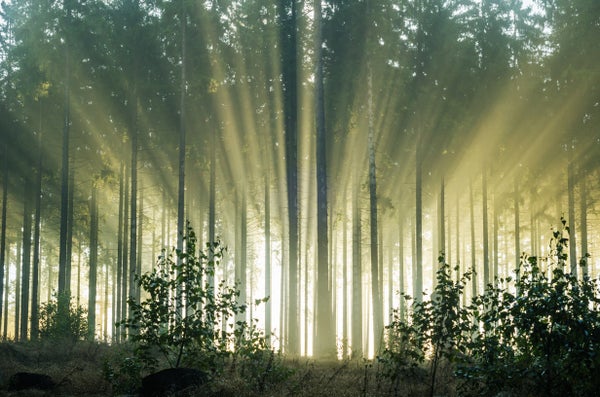All around the world, ecosystems are silently breathing.
Plants take in carbon dioxide to use for photosynthesis. At the same time, as they grow and burn energy, they release carbon dioxide back into the air in a process known as respiration. It happens in rainforests, grasslands, tundras and deserts—anywhere vegetation can be found.
For now, on average, the world’s land-based ecosystems are storing more carbon than they’re releasing. In fact, scientists estimate that they soak up at least a third of all the carbon emissions humans produce by burning fossil fuels. That makes natural ecosystems a key resource in the fight to halt climate change.
On supporting science journalism
If you're enjoying this article, consider supporting our award-winning journalism by subscribing. By purchasing a subscription you are helping to ensure the future of impactful stories about the discoveries and ideas shaping our world today.
But scientists worry that rising temperatures may eventually upset the delicate balance between carbon in and carbon out.
Photosynthesis and respiration both start to decline when it gets hot enough. But photosynthesis begins to decrease at much lower temperatures than respiration—it generally peaks between 64 and 82 degrees Fahrenheit, depending on the type of plant.
When this happens—photosynthesis declining while respiration continues increasing—ecosystems may begin to release more carbon than they take in.
A new study warns that this tipping point could be closer than expected for much of the world. If greenhouse gases continue to rise at their current rates, it suggests, nearly half the world’s terrestrial ecosystems could cross the temperature threshold within just a few decades.
“A lot of countries are relying on the biosphere to offset some of their emissions,” said lead study author Katharyn Duffy, a scientist at Northern Arizona University. “And I think what this study shows is that that offset is a lot more fragile than we previously realized, and that we are a lot closer to a potential climate tipping point than we previously realized as well.”
The study pulled data from a vast network of scientific sensors placed all over the world, called the FLUXNET Network. These sensors measure a variety of atmospheric variables, including temperature, humidity and local levels of carbon dioxide.
By analyzing data from sites all over the world, Duffy and her colleagues were able to determine how different types of ecosystems respond to changes in local temperatures. With this relationship established, they could project how global ecosystems might change as the climate continues to warm.
Without any effort to curb greenhouse gas emissions and slow global warming, as much as 45% of the Earth’s natural land ecosystems could cross the tipping point.
That’s not the only bad news, the authors warn.
In recent years, some scientists have theorized that plants might be able to adapt to global warming over time—perhaps adjusting to perform photosynthesis at higher temperatures. The new study suggests that, so far, this hasn’t happened.
The study also suggests that rising carbon dioxide levels haven’t helped much either.
Because plants use carbon dioxide for photosynthesis, rising CO2 could theoretically give them a boost. But many experts have cautioned that those benefits likely would be outweighed by all the other negative effects of climate change. So far, the data seems to support that idea.
The new study focused on the relationship between photosynthesis and respiration. But there are plenty of other factors that can cause an ecosystem to start releasing carbon—namely, big disturbances such as deforestation, wildfires or droughts.
In fact, other recent studies have warned that these kinds of disturbances are threatening the global carbon sink.
One recent study found that global grasslands are now producing as much carbon as they soak up, mainly due to land use changes and the expansion of agriculture (Climatewire, Jan. 6). Other studies have found that deforestation is increasingly threatening the carbon sink in tropical forests around the world.
But there’s still reason to hope.
Right now, only about 10% of the world’s natural ecosystems have hit the temperature tipping point—and usually only for a month or two at a time, the study notes.
And a high-warming scenario—such as the one the new study warns of—is by no means inevitable. The study suggests that if the world manages to stick to its climate goals, keeping global temperatures within about 2 degrees Celsius of their preindustrial levels, the world’s natural ecosystems will remain largely protected.
But the new research should serve as a warning that the world’s natural carbon sinks aren’t invincible, Duffy noted.
“We need to be very aware of the fragility of the ecosystem services—not just carbon sequestration, but a whole host of them that the biosphere provides,” she said. “Because it is a living, breathing part of our planet.”
Reprinted from E&E News with permission from POLITICO, LLC. Copyright 2021. E&E News provides essential news for energy and environment professionals.
